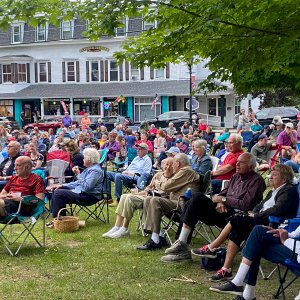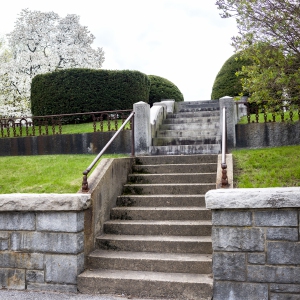What happens during an open-heart surgery
| Published: 02-26-2020 11:11 AM |
Dr. Nicola Francalancia of Concord Hospital Medical Group Cardiothoracic Surgery explains what happens during open heart surgery.
What is open-heart surgery?
Open-heart surgery is any invasive heart procedure that requires an open surgical incision on the heart. Open-heart surgery includes bypass surgery, valve replacement or any repair directly on the heart.
What types of conditions does open-heart surgery address?
Conditions related to blocked arteries to the heart, tight or leaky heart valves or abnormal anatomic conditions that require repair or reconstruction are performed by a cardiac surgeon during open-heart surgery.
The most common open-heart procedure is coronary artery bypass surgery, followed by valve replacement or repair and repair of aortic aneurysms (weaknesses in the aorta, the main blood vessel carrying blood from the heart to the rest of the body). Coronary arteries supply the heart muscle with its blood supply, keeping the heart healthy and able to beat, or squeeze, strongly. If coronary arteries are blocked, partially or totally, blood flow is limited and can lead to a heart attack or weakened heart. Depending on their location and size and a patient’s other health factors, some blockages can be opened with a stent (a tube-like structure moved to the blockage that holds the artery open from the inside) by cardiologists. When stents are not possible, coronary bypass surgery is performed. The two valves most commonly repaired or replaced by cardiac surgeons are the aortic and mitral valves. Open heart surgery for valves requires surgical exposure of that valve in an operating room.
Describe coronary bypass surgery.
With the patient under general anesthesia, the surgeon makes an incision along the breastbone and spreads the breastbone to gain clear access to the heart. The patient is placed on a heart-lung machine, which takes over blood circulation while the heart is stopped. The surgeon obtains an artery from under the breastbone and a vein from the leg and sews them in place to give blood a new path around the blockage, restoring blood flow to the heart muscle. The heart starts again when warm blood flows in and patients are removed from the heart-lung machine. The breastbone is closed and held together by wires so it can heal. The new artery or vein bypass graft becomes the new source of blood supply to the heart muscle affected by the blocked native coronary artery.
Article continues after...
Yesterday's Most Read Articles
 New Hampshire legalizes public alcohol consumption in designated ‘social districts’
New Hampshire legalizes public alcohol consumption in designated ‘social districts’
 New Hampshire providers brace for Medicaid changes that reach beyond healthcare
New Hampshire providers brace for Medicaid changes that reach beyond healthcare
 Warner town administrator granted restraining order against selectman
Warner town administrator granted restraining order against selectman
 Concord school leaders weigh the future of middle school project without state building aid
Concord school leaders weigh the future of middle school project without state building aid
 Opinion: Dear Gov. Ayotte, let’s talk about the books
Opinion: Dear Gov. Ayotte, let’s talk about the books
 Fire in Webster fully engulfed one garage, spread to another
Fire in Webster fully engulfed one garage, spread to another
Will new minimally invasive procedures replace the need for open-heart surgery?
Minimally invasive techniques have gotten better. There are techniques performed by both surgeons and cardiologists that address the conditions currently treated by open techniques. Their effectiveness and longevity continue to be studied to determine which newer techniques are superior in outcome for cardiac conditions. Minimally invasive techniques are desirable only if they prove to be both superior and less risky than traditional open procedures.
How long is recovery from open-heart surgery?
Recovery from open heart surgery involves approximately six weeks of recovery similar to other major operations. Hospital time may include less than one week in the hospital followed by discharge to home with limitations inactivity. Most limitations are to protect the breast bone which may require several months to gain its full strength. Return to work for non-strenuous occupations can be in 6 to 8 weeks.
What are the main risk factors for coronary artery disease?
Family history of heart disease, diabetes, high blood pressure, high cholesterol, obesity, smoking, and sleep apnea are the defined risk factors for coronary artery disease. Keeping weight, cholesterol, blood pressure and blood sugar under control can help avoid heart disease. Smoking cessation is absolutely necessary to maintain good heart health even after bypass surgery.
(Dr. Francalancia is a cardiothoracic surgeon with Concord Hospital Medical Group Cardiothoracic Surgery. He offered a presentation on open-heart surgery at the February Concord Hospital Trust “What’s Up Doc?” Donor Lecture Series. The monthly series features members of Concord Hospital’s medical staff speaking to Concord Hospital Trust donors about new and innovative medical treatments and services. You can watch Dr. Francalancia’s presentation on Concord Hospital’s YouTube channel at: youtube.com/concordhospital.)
]]>







 Arts in the Park returns for July
Arts in the Park returns for July Hopkinton art gallery showcases “Creativity Beyond Convention”
Hopkinton art gallery showcases “Creativity Beyond Convention” AROUND CONCORD: Your guide to free summer music
AROUND CONCORD: Your guide to free summer music Around Concord: Steps to nowhere – but it used to be somewhere
Around Concord: Steps to nowhere – but it used to be somewhere
